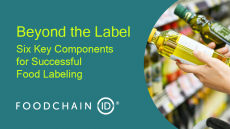Millennials and taste are “sticking points” for salt reduction
But making products that still taste as good despite having less sodium remains a challenge for food manufacturers, said Darren Seifer, food and beverage industry analyst at The NPD Group.
And so-called Millennials - adults primarily in their 20s – appear to need the most convincing.
Using a modeled forecasting technique NPD looked at the past 10 years of consumption history, then projected consumption behavors 10 years into the future by factoring changes in the population, generational behavors and overall trends.
Seifer said: “Using this method, we predict that the growth in using products with a low or reduced-sodium label will outpace the population growth rate.”
The report called Sodium Concerns and Opportunities also compared sodium intake among different age groups with the recently updated dietary guidelines from the United States Department of Agriculture (USDA). The guidelines suggest a daily sodium intake of 2,300 mg for the average person and 1,500 mg for those aged over 50.
NPD’s research found that 67 percent of adults claimed they were trying to cut down or avoid sodium.
Meanwhile, of all the generations, Millennials had the highest sodium intake, consuming on average 3,485mg of sodium per day. They also had the fewest health concerns and about 32 percent regularly checked labels for sodium compared with 41 percent of all adults.
Seifer said: “In the United States, we tend to take a closer look at our food and beverage consumption when there is a present need, such as a medical condition.
“For example, adults who were born before 1946 are most likely to watch their fat, cholesterol and sodium intake, while at the same time consume the most fruits and vegetables compared to other adults.
“Millennials have yet to encounter the ailments that Older Baby Boomers (born 1946-1955) and Seniors (born before 1946) are facing, thus they tend not to face any immediate consequences of consuming sodium at such high levels.”
He added: “Manufacturers are aware that the US population is aging. Along with age comes the increased likelihood of heart-related issues often causing consumers to watch the intake of certain elements, particularly sodium.
“The main challenge for manufacturers is how to make their products just as tasty as they are now with a lower sodium content.”
This is just what many manufacturers are striving to achieve, considering that an estimated 75 percent of US sodium intake comes from processed foods and most major food manufacturers now have some kind of sodium reduction strategy.
Seifer said that although eating habits were difficult to change, offering popular foods and beverages with lower sodium, while maintaining their taste profiles, would be “a good start in shifting current sodium consumption behaviour”.


















